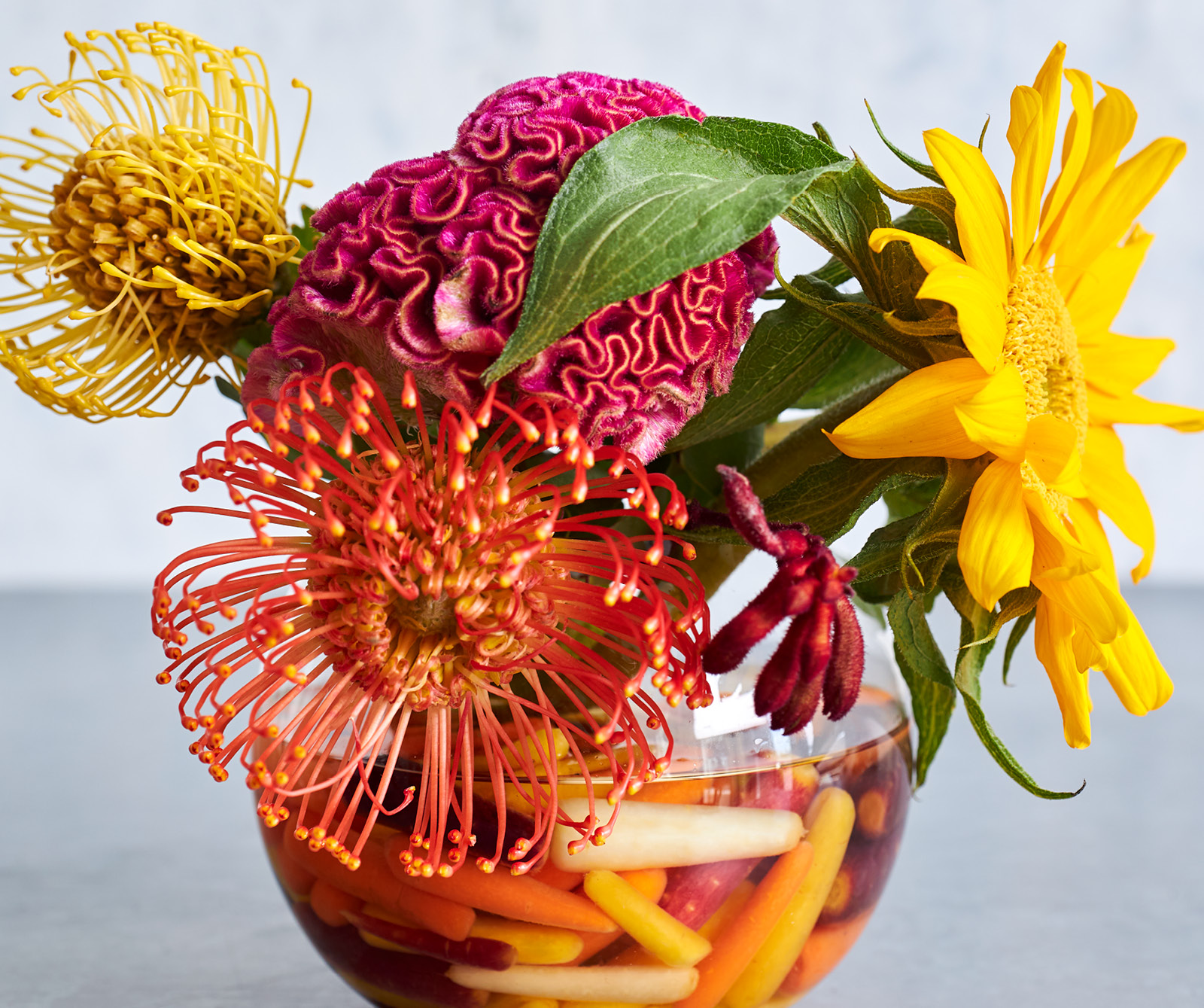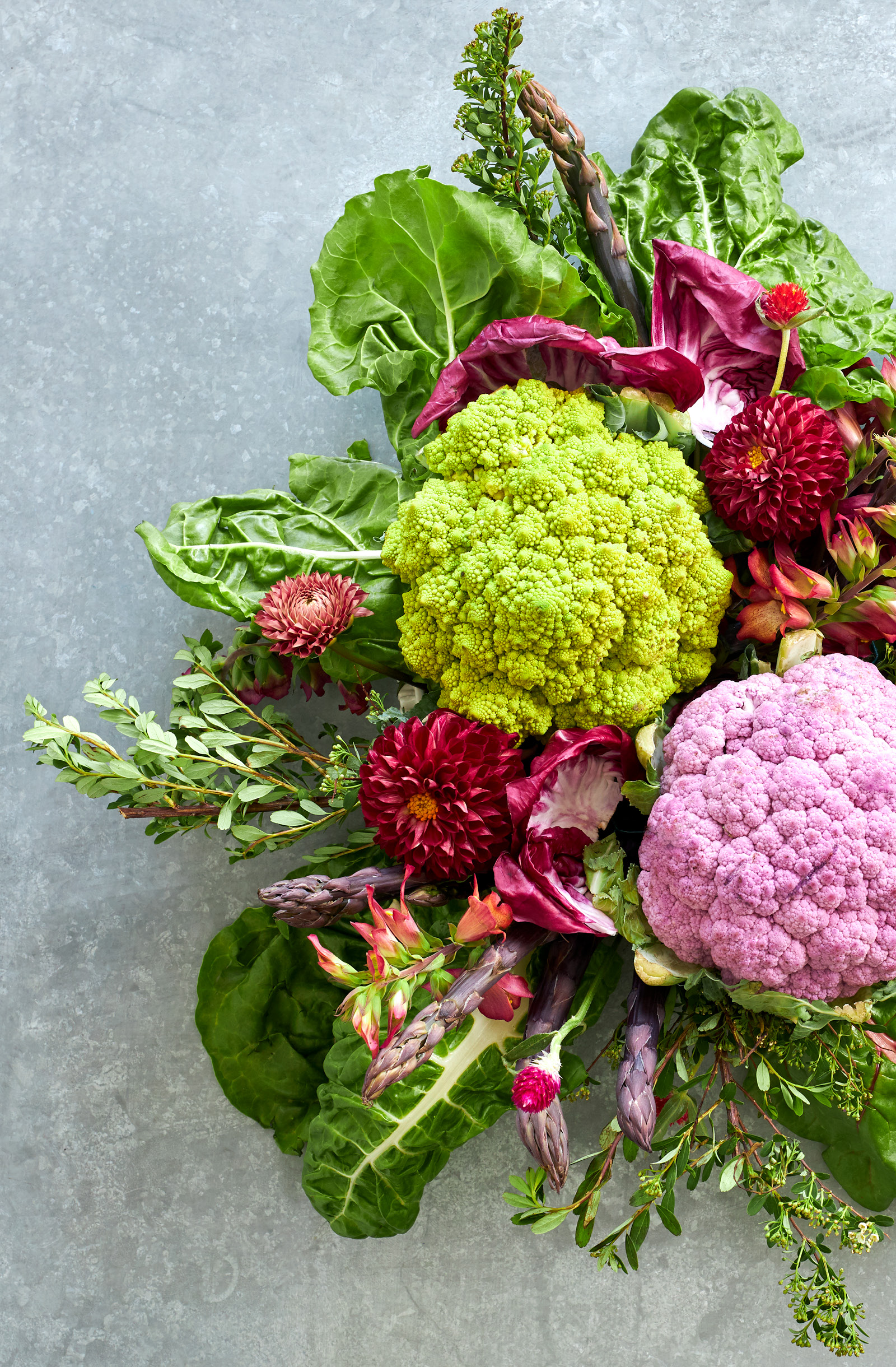
Nature gives us the opportunity to control very few parts of it. But why would we want to control something that provides never-ending wonder and mystery? Whether it’s a majestic mountain view or a field sprinkled with wildflowers, the surprising perfection of natural beauty is always appreciated. Those banks of hydrangeas that have saturated Instagram with intense color over the past few weeks can’t be beat.
Sometimes I look through a different lens, however, to appreciate one part of nature: the bounty of vegetables at summer’s peak. The void of present-day restaurant visits has me grocery shopping and cooking more. As I plan meals for the family, make stops at the market, and watch my garden reach its glory, I’ve thought of these natural nutritional gems differently, as their very own statements of beauty.
It’s easy to pick a favorite vase from the cabinet, step outside, and stuff it with cuttings from flowers throughout the garden. I wanted to create something different, though, as I conjure new ways to make our at-home meals intriguing. The rainbow of colors, variegated leaves, and interesting textures of vegetables directed me to put my flower arranging on an ever-so-slight pause to let this food group add a decorative lift to my displays.
I started by letting experimentation guide me to something that matches the impact of the design I aim for throughout my interior projects. My first arrangement enhances locally sourced flowers. Heirloom tomatoes casually scattered around a white vase parallel the playful nature of the wiry ranunculus. Using rich colorful tomatoes as decoration on a tablescape adds dimension and an informal farm-to-table experience.

In another experiment, carrots in shades of white, yellow, orange, and purple made their way into a basic, clear round glass. With single stems of tropical flowers commanding attention, the carrots add scale and textural diversity. Submerged in water, the carrots disguise what can be unsightly stems, another plus.

Finally, after playing around with single types of vegetables, it was time to reach for a more dynamic display. My grouping of produce was collected, assembled and then balanced out with color and scale. The final arrangement isn’t about effortless ease, rather those tried-and-true design skills that layer my interiors with pattern, color, and personality.
What turns heads at the market are the unconventional colors that traditional vegetables are showing up in. Cauliflower is one prime example. The all-white cauliflower head was routinely divided into florets to spread across every vegetable tray that I remember from my youth. It’s now fashionable in electric chartreuse and in lilac that repeats the pastel of spring’s most fragrant flower. Those colors were my inspiration and are easily supported by red cabbage, purple asparagus, and kale. Of course, I tucked floral fare in, too, just to give the arrangement moments of daintiness. Boxwood from my garden, and a few dahlias boost the “pretty” factor of the cauliflower masses in unexpected colors.
Vegetables are the basis of so many delicious summer sides. Their colors, especially when branded with grill marks and brushed with olive oil and herbs, could not be better for us. I want to make a statement about their natural beauty, though. Sunsets, panoramic beaches, and bushes of floral splendor, step aside. Vegetables are staple in the health category of life. I’m learning to lean on them for a twist on my own take of what’s beautiful.


